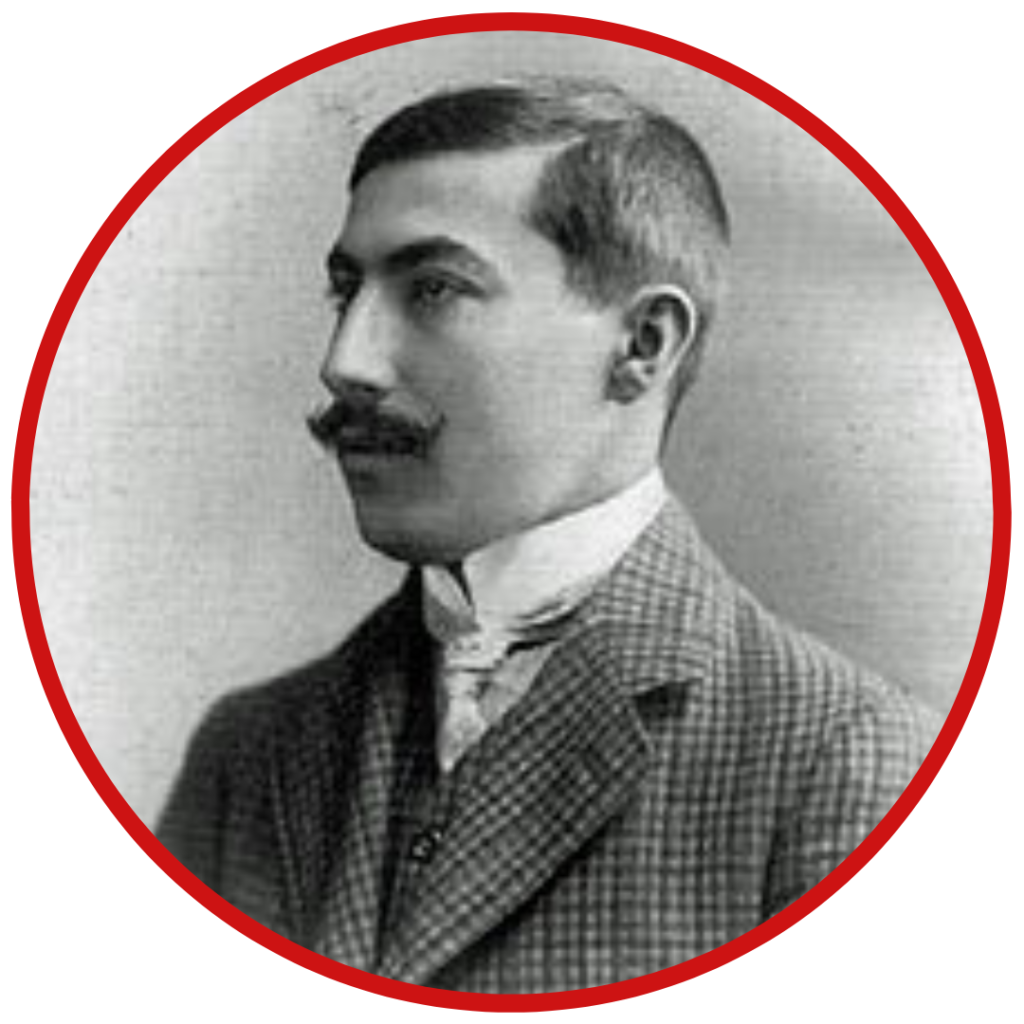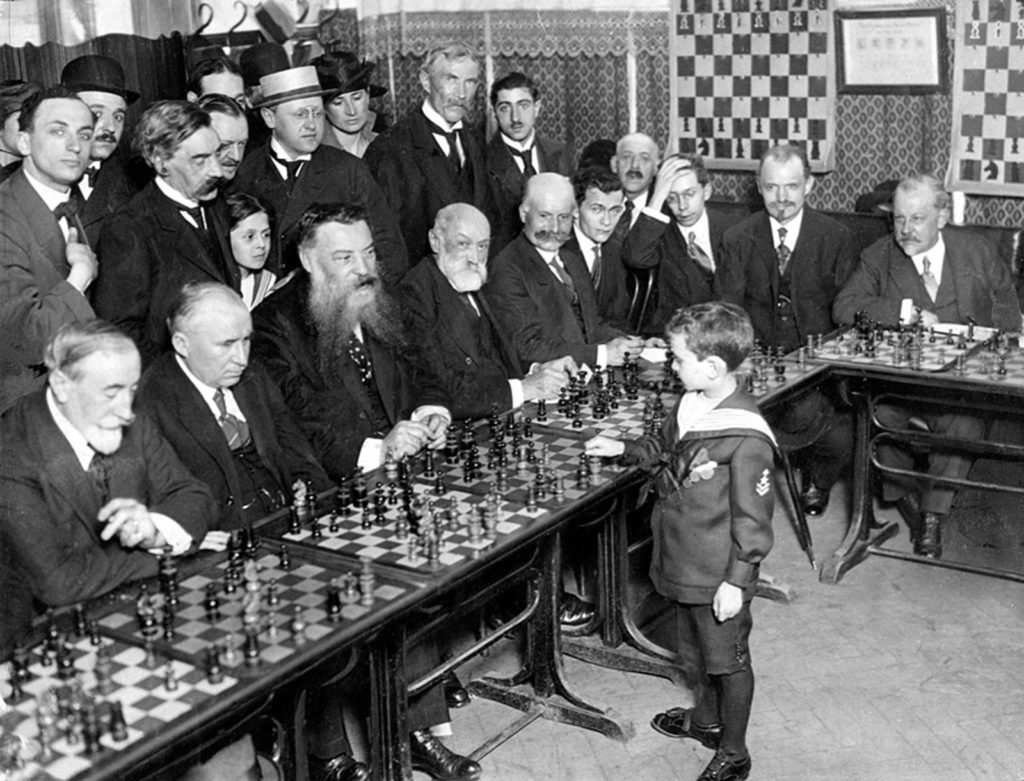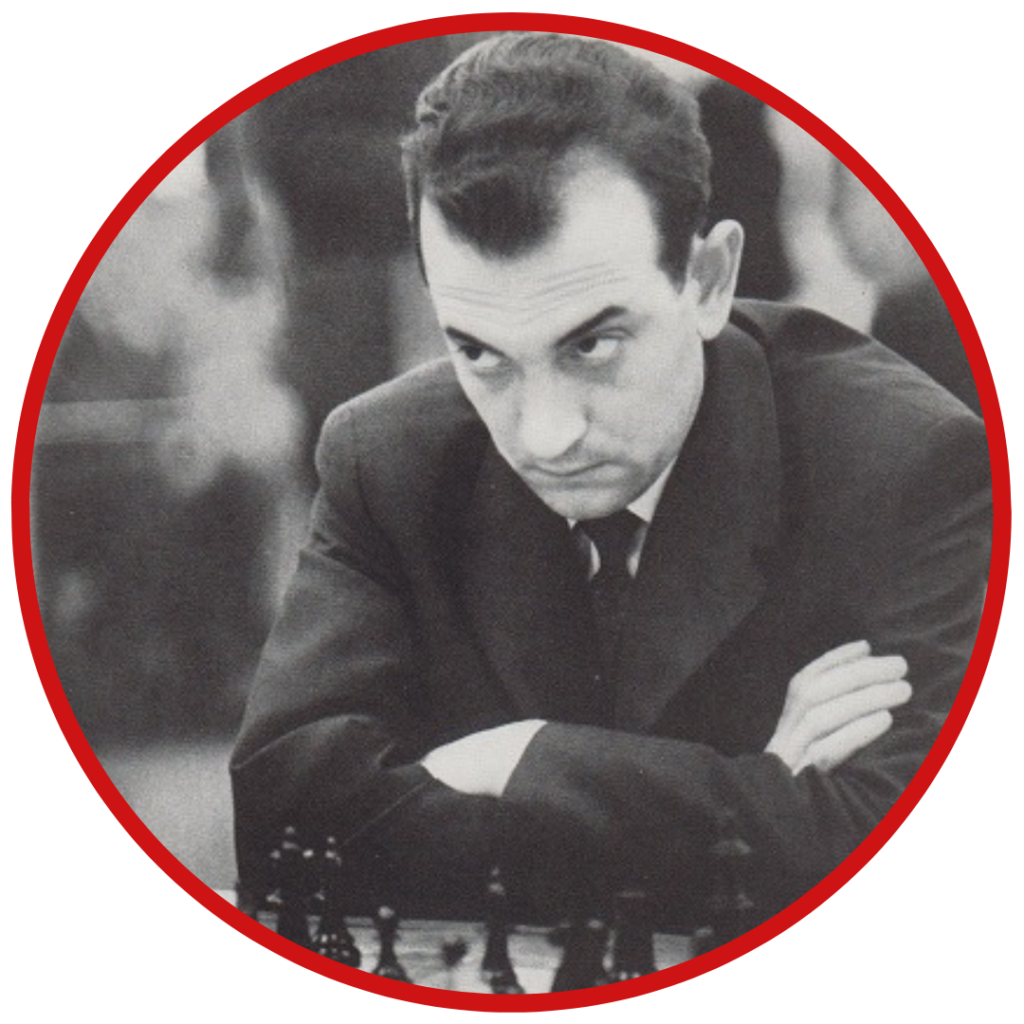A look at some of the greatest chess players who never became World Champions:
Paul Morphy

Paul Morphy’s (1837 – 1884) chess career was brief, but his legacy will last a lifetime. As a chess prodigy, he showed exceptional skill from a young age. Eventually, he cemented his position as one of the greatest players by winning tournaments in the US and internationally. In 1957, at the age of 20, he won the First American Chess Congress in 1857, beating his opponents by large margins. Following this, he took his talent to Europe and played matches against some of the world’s strongest players, and once again, he proved his brilliance by winning all of his matches (despite even falling ill with intestinal influenza). One of these matches was played in Paris against the great Adolf Anderssen, who Morphy beat 8-3 in their 11-match game. Anderssen would go on to say that Morphy was the strongest player ever to play the game. Here is the brilliant game 9 from their match:
Here is another little gem (a casual game) between these two greats:
Morphy’s style was aggressive and dynamic, and with his strong tactical abilities, he was able to launch powerful attacks and exploit weaknesses in his opponents’ positions. Undeniably talented, he understood chess on an intuitive level, and he could arguably have become World Champion. However, at the mere age of 21, Morphy retired from competitive chess and instead pursued a career in law which attributed him the nickname “The Pride and Sorrow of Chess”. Furthermore, the formal World Championship title was only created in 1886, two years after Morphy’s death. Many argue that this timing was intentional, as the World Champion’s dominance would always be questioned as long as Morphy was alive.
Morphy’s legacy in the chess world is profound. His contributions to opening theory, positional play, and attacking chess remain influential to this day. He was an early pioneer of the modern chess style – emphasizing the importance of piece development, central control, and king safety. His last gift to chess was a concept well-known today, but quite extraordinary for its time; the rook lift. In a casual game (played with odds) against his friend, Charles Maurian, Morphy played 9.Ra3! here to transfer the rook to the kingside:
To end off our look at one of the greatest players of all time, here is a puzzle created by Morphy at the age of 10! White to play and checkmate in two moves:
Check out: Morphy: Move by Move
Adolf Anderssen

Adolf Anderssen (1818-1879) was a German chess player and one of the leading figures in 19th-century chess. He was long considered to be the world’s best player, owing to his domination in German tournaments and international ones – such as in 1851 when he won the London International Chess Tournament, the first tournament meeting of Europe’s best players at the time. However, his match loss to Morphy in 1958 challenged his title of being the best, but this was short-lived due to Morphy’s retirement.
It was Anderssen’s 1851 “Immortal Game” against Lionel Kieseritzky that really placed him as one of the chess greats. With a queen sacrifice and picturesque checkmate, he showcased his aggressive style and tactical genius:
Anderssen’s style can be characterized as creative, imaginative, and aggressive, which resulted in sacrifices and beautiful combinations in his games. He understood harmonious coordination – how pieces worked together, which along with his tactical maneuvers, earned him the nickname “The Chess Romantic.” Even though the Elo system did not exist yet during his time, he was thought to be rated above 2600 by Arpad Elo, the creator of the Elo system.
While his performance declined in later years, Anderssen’s contributions to chess remain influential. Such as his contribution to chess theory, with the “Anderssen Opening” where White starts with 1.a3, and “Anderssen Attack” in the King’s Gambit. Ultimately, Anderssen is considered to be one of the best players of his era, and his games and analyses continue to be studied and admired today.
Check out: Chess Secrets: Great Chess Romantics
Akiva Rubinstein

Akiva Rubinstein (1880 – 1961) was a Polish Chess Player, whose chess career took off in the early 1900s when he achieved notable successes in international tournaments. One of Rubinstein’s most incredible successes was his performance in the 1912 St. Petersburg tournament, which he won by defeating several world-class players, including World Champion Emanuel Lasker. This triumph solidified his status as one of the top contenders for the world championship title, and he even went on to qualify for a 1914 match against Lasker.
Unfortunately, the outbreak of World War I resulted in the match being canceled, and more detrimentally, halted Rubinstein’s tournament participation and career. Whether Rubinstein could have successfully claimed the throne at the height of his career is something we will never know, as he was never able to return to his same form after the war. Nevertheless, he also received the International Grandmaster title from FIDE at its 1950 inauguration.
Rubinstein’s contributions to chess and his tournament successes are widely recognized. He made significant contributions to opening theory, particularly in the French Defense and Nimzo-Indian Defense. Funnily enough, he inadvertently has a line in the Queen’s Gambit Declined named after him – the “Rubinstein Trap,” as he fell into it a couple of times against Euwe and Alekhine.
Can you find the move for White?
Rubinstein had a methodical playing style, characterized by solid openings, strategic maneuvering, and precise calculation. He was particularly gifted in the endgame and had a deep understanding of pawn structures. Take a look at his 1909 game against Lasker:
Notes by Emanual Lasker. Credit: chessgames.com
A perfect example of Rubinstein’s endgame skills – Black is left in a zugzwang!
Check out: The Life and Games of Akiva Rubinstein: Volume 1
Samuel Reshevsky

Samuel Reshevsky (1911 – 1992) was a Polish-American chess player whose career began when he was just five years old, and many consider him to be one of the strongest chess prodigies. By the age of eight, he was already competing against strong adult players. At the age of ten, he embarked on a series of simultaneous exhibitions, winning against experienced opponents and astonishing the chess world.

His career kept on flourishing as he grew older as he; participated in multiple Olympiads representing the US, won the US Championship 8 times (a record he shares with Bobby Fischer), placed third in the 1948 World Chess Championship tournament, placed second in the 1953 Candidates tournament, and was awarded the title of International Grandmaster by FIDE at its inaugural inception.
Reshevsky remained a top player for a long time, although never become a world champion, missing several opportunities to compete for the title due to various circumstances, including World War II. Nevertheless, he consistently proved himself to be a great player, even beating the likes of Alekhine, Capablanca, and Euwe (to name a few).
Reshevsky was known for his exceptional positional understanding and defensive skills. His style can be regarded as solid and methodical where he often focused on strategic maneuvering and patiently exploited his opponents’ weaknesses.
In this position, from a game between Reshevsky and Emanuel Lasker (1936), Black gives a final blow which caused White (Lasker) to resign. Can you find the continuation?
Check out: The Great Reshevsky
David Bronstein

Out of all the chess greats we have looked at, David Bronstein (1924 – 2006) was the closest to becoming World Champion. His career was colored by multiple Soviet and International successes, which included attaining the inaugural 1950 International Grandmaster title, winning the 1950 Candidates Tournament, and subsequently earning the right to challenge Botvinnik for the throne.
The 1951 World Championship Match between Bronstein and Botvinnik ended in a draw after 24 games – where each player won five games, and twelve games were drawn. After game 22, Bronstein was actually leading by a point and had to simply not lose either of the remaining two games in order to attain the title. Sadly, he lost the 23rd game and they drew the 24th, resulting in a tie. In today’s format, after such a result, the title would be decided through shorter time control playoffs, but in 1951 the title remained with the reigning champion – Botvinnik. Interestingly, Bronstein won four out of his five victories before adjournment whereas four out of five of Botvinnik’s victories were achieved after adjournment!
Here is Bronstein’s unfortunate game 23 loss:
Bronstein’s playing style was characterized by his desire for originality and his willingness to take risks. He excelled tactically, which is prevalent in his sacrificial combinations in his games. He also contributed greatly to chess theory, particularly the King’s Indian Defense (which he wrote a book on), and the Caro-Kann and Scandinavian, which have variations named after him:
Caro-Kann Bronstein–Larsen Variation
1.e4 c6 2.d4 d5 3.Nc3 dxe4 4.Nxe4 Nf6 5.Nxf6+ gxf6
Scandinavian Defence, the Bronstein Variation
1.e4 d5 2.exd5 Qxd5 3.Nc3 Qd8
But it doesn’t end there! Bronstein made a few more significant contributions to chess. He famously wrote “Zurich International Chess Tournament 1953“, which is widely considered to be one of the best chess books written as it gives key insights into how top players think. He also introduced the idea of adding a time increment to every move – which we use in high-level chess today. And finally, Bronstein made notable contributions as a coach and a second for other top players such as Anatoly Karpov, who he helped prepare for his World Chess Championship matches against Garry Kasparov.
To end off our look at the top players who were never World champions, let’s take a look at one of Bronstein’s most creative games:
Check out: Bronstein: Move by Move
Viktor Korchnoi

Viktor Korchnoi (1931-2016) is a name that many people requested to be added to this list, and we have done just that with the release of Korchnoi: Year by Year. Korchnoi emerged as a top player in the Soviet Union during the 1950s and 1960s, winning the USSR Championship multiple times. However, he also cemented himself as a chess giant internationally by becoming a World Champion candidate ten times. Although he never became World Champion himself, he beat 9 of them (a record!), but more importantly, he fought for the title throughout his career and even played three World Championship matches against Anatoly Karpov. Unfortunately, even though some of the matches were incredibly close – where he lost by only one game, he never tasted victory.
His career is most notable for its longevity – whereas most (great) players tend to reach their peak during their earlier age, Korchnoi continued to improve even after the age of 45 and remained in the top 10 rating list for 36 years! He continued playing chess and championships even after his late 70s and no other player ever played so well for as long as he did. So, even though he never became a World Champion, Korchnoi is still an inspiring chess figure and considered to be the strongest player to never attain the title.
Known for his aggressive and combative style, Korchnoi was a universal player who could handle all types of positions. His fighting spirit at the chessboard was legendary – he was known to play on in seemingly drawn positions and often converted them into wins.
Author Tibor Karolyi describes Korchnoi’s style as follows:

To showcase Korchnoi’s skill, take a look at this game against Tal from the 1962 USSR Championships. It’s not every day that the 8th World Champion is beaten in this fashion:
Who do you think should be added to the list? Let us know in the comments below!


Puzzle Solutions
Morphy: 1.Ra6 bxa6 2.b7#
Reshevsky: 1…Qg5+ 2.Kh1 Qh5!
Rubinstein: 1.Nxd5! Threatening Bc7.
- The Power of Pattern Recognition: The Woodpecker Method 2 - August 20, 2024
- Rock Solid Chess: Volume 2 - February 21, 2024
- Unsung Heroes of Chess - February 19, 2024
